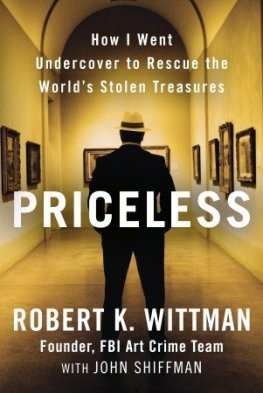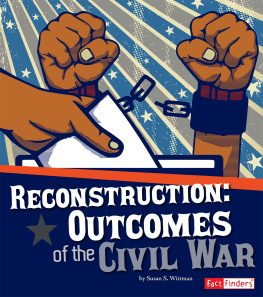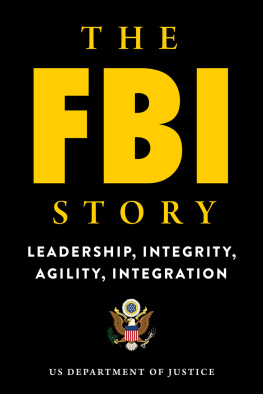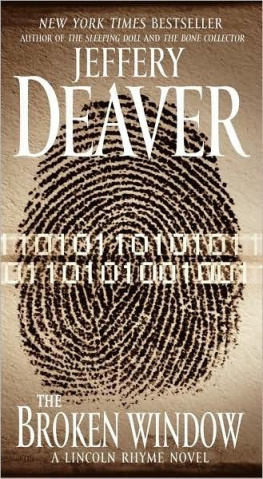To Donna, my wife, and our three children,
Kevin, Jeffrey, and Kristin
CONTENTS
Chapter 1:
Chapter 2:
Chapter 3:
Chapter 4:
Chapter 5:
Chapter 6:
Chapter 7:
Chapter 8:
Chapter 9:
Chapter 10:
Chapter 11:
Chapter 12:
Chapter 13:
Chapter 14:
Chapter 15:
Chapter 16:
Chapter 17:
Chapter 18:
Chapter 19:
Chapter 20:
Chapter 21:
Chapter 22:
Chapter 23:
Chapter 24:
Chapter 25:
ALLA PRIMA
C HAPTER 1
S OUTH B EACH
Miami, 2007.
T HE PLATINUM R OLLS -R OYCE WITH BULLETPROOF windows glided east onto the Palmetto Expressway toward Miami Beach, six stolen paintings stashed in its armor-plated trunk.
Great works by Degas, Dal, Klimt, OKeeffe, Soutine, and Chagall were piled rudely in the rear, wrapped individually in thin brown paper and clear packing tape. In the drivers seat, a Parisian millionaire named Laurenz Cogniat pushed the three-ton beast hard. He entered the left lane approaching eighty, then ninety miles an hour, the vehicles menacing stainless-steel grille leading the way.
At Interstate 95, the glimmering Rolls turned south, hurtling down the raised concrete ribbon, the Miami skyline rising ahead. Laurenz took the Martin Luther King Boulevard exit, made a sharp U-turn, and jumped back on to the interstate, still southbound. His cold green eyes flicked from the road to the rearview mirror and back again. He craned his neck and searched a cobalt Florida sky. Every few minutes, Laurenz stabbed the brakes, dropping down to forty or fifty miles an hour and slipping into the right lane, then abruptly punched the gas again. In the passenger seat, a plump shaggy-haired fellow with a warm round face, a Frenchman who called himself Sunny, sat stoically, an unlit Marlboro between his lips. He, too, searched for suspicious vehicles.
In the backseat, I glanced at my borrowed Rolex and watched with amusement as Laurenzs domed head bobbed and weaved with the traffic. At this rate, we were going to arrive early, assuming Laurenz didnt attract a traffic cop or get us killed first. He shifted lanes again, and I gripped the handle above the door. Laurenz was an amateur. A bored real-estate magnate in a V-neck T-shirt, faded blue jeans, and sandals, he longed for adventure and assumed that this was how criminals ought to act on the way to a big dealdrive erratically to make sure no one is tailing them. Just like in the movies.
Behind black-mirrored shades, I rolled my eyes. Relax, I said. Slow down.
Laurenz pursed his lips and pressed a sandal on the accelerator.
I tried again. Um, its kind of hard to be inconspicuous to the police when youre driving ninety miles an hour down I-95 in a platinum Rolls-Royce Phantom.
Laurenz pushed on. A self-made man, he didnt take orders from anyone. Sunny, still pouting because I wouldnt let him carry a gun, ignored me as well. He ran a stubby hand through his thick mane and quietly stared out the window. I knew he was nervous. He fretted that Laurenz was too temperamentala whiner and ultimately a coward, a guy who might appear bold and buff, but couldnt be counted on if things turned violent. Sunny didnt speak much English and I didnt speak much French, but whenever we talked about Laurenz, we agreed on one thing: We needed his connections. I tugged my seat belt tighter and kept my mouth shut.
The two Frenchmen in the front seat knew me as Bob Clay. In using my true first name, I was following a cardinal rule of working undercover: Keep the lies to a minimum. The more lies you tell, the more you have to remember.
Sunny and Laurenz believed I was some sort of shady American art dealer, a guy who worked both sides of the legal and illicit art markets, an international broker comfortable with multimillion-dollar deals. They didnt know my true identity: Special Agent of the Federal Bureau of Investigation and senior investigator of the FBIs Art Crime Team. They didnt know that the European criminal whod vouched for me in Paris was in fact a police informant.
Most important, Sunny and Laurenz viewed todays sale of six paintings as a mere prelude to the Big One.
Together, with their French underworld connections and my money, we were negotiating to buy a long-lost Vermeer, a couple of Rembrandts, and five sketches by Degas. This collection of art was worth $500 million, and far more significant, it was infamous. These were the very masterpieces stolen seventeen years ago during the greatest unsolved art crime in history, the 1990 theft from the Isabella Stewart Gardner Museum in Boston.
The Gardner heist had long haunted the art world and the many investigators who failed to run the thieves to ground and recover the stolen paintings. The Boston police and local FBI office had chased hundreds of dead-end leads, checking every lousy tip, wild rumor, and spurious sighting. Theyd debunked theories floated by con men and gadflies angling for the $5 million reward. As years passed, new suspects surfaced and old ones died, some under mysterious circumstances. This spawned countless conspiracy theories: It was the mob; it was the IRA; it was a made-to-order heist by a foreign tycoon. The thieves didnt know what they were doing; they knew exactly what they were doing. The burglars were long dead; they were alive, living in Polynesia. It was an inside job; the police were involved. The paintings were buried in Ireland; they were hidden in a Maine farmhouse; they hung on the walls of a Saudi princes palace; they were burned shortly after the crime. Journalists and authors investigated and wrote speculative and scandalous takeouts. Filmmakers produced documentaries. Each year, the legend of the Gardner heist grew. It became the holy grail of art crime.
Now I believed I was weeks away from solving it.
Id spent nine painstaking months undercover luring Sunny and Laurenz, ingratiating myself with them to win their trust, and todays entire ruse on a leased yacht was a near-final step in that process, designed to prove to them beyond a doubt that I was a serious player. The six paintings in the trunk were rank forgeries, copies Id picked out at a government warehouse, yet good enough to fool Laurenz and Sunny. The FBI script called for the three of us to go for a short cruise aboard the rented boat, The Pelican. There, we would meet a Colombian drug dealer and his entourage, and sell him the paintings for $1.2 millionto be paid with a mix of bank wire transfers, gold coins, and diamonds. Of course, the drug dealer and everyone else on the yachthis henchmen, the hot women, the captain and stewardswere fellow FBI undercover agents.
As we rolled toward our exit, the script reeled through my head and I visualized last-minute preparations aboard The Pelican: the Colombian dealer opening a shipboard safe, withdrawing a handful of Krugerrands and a sack of diamonds; the four brunette babes, hard bodies in their late twenties, stashing their Glocks and slipping into bikinis; the stewards in white linen uniforms laying out tortilla chips, salsa, rare roast beef, shoving two magnums of champagne into ice buckets; a sullen Irishman alone on a curved cream sofa, hunching over text messages on a silver BlackBerry; the captain flipping on hidden surveillance cameras and hitting record.
The Rolls sped east onto the MacArthur Causeway, the majestic link between downtown and Miami Beach. We were five minutes out.











